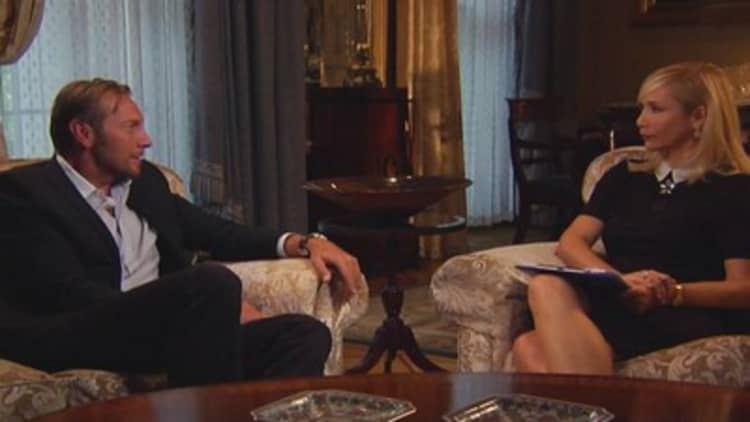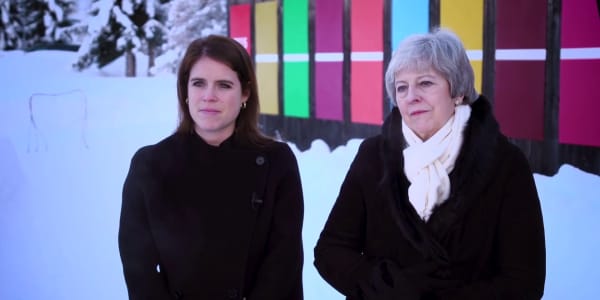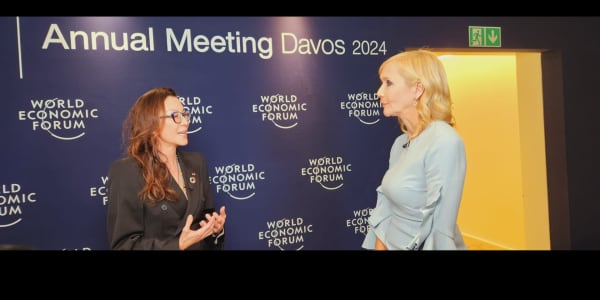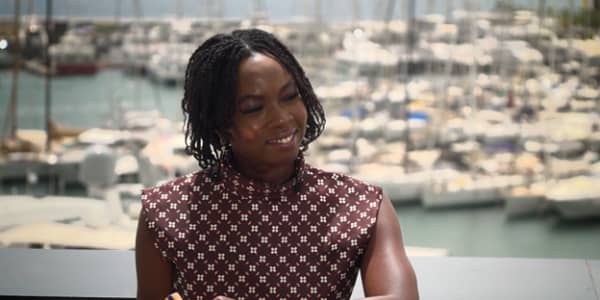
In the town of Herzogenaurach in Bavaria, two huge sporting businesses lie just off the main Zum Flughafen road, a mere 20-minute walk apart.
The address of one of the headquarters - as well as the brand's name - offers a clue as to why the two sportswear behemoths are based so closely in a quiet town near Nuremberg, and why their rivalry was so potent for 60 years.
Adidas group's main base lies on Adi-Dassler-Straße. It's named after Adolf "Adi" Dassler, who created Adidas in 1948 after he split with his business partner and brother, Rudolf Dassler – who went on to form Puma.
In an interview with CNBC Meets, former Puma CEO Jochen Zeitz said he was not sure why there was such hatred between the two brothers, although there were rumours it had to do with a woman, or the brothers' wartime records.
"Who knows?" said Zeitz. "It ultimately ended in the two never speaking again in their lives."
Brotherly love gave way to a seething sibling rivalry that was absorbed by the town for several decades.
(Read more: How Puma nearlydropped Usain Bolt)
Barbara Smit's book on Adidas and Puma, Pitch Invasion, described how Herzogenaurach became known as "the town of bent necks" due to residents always looking down at a person's shoes before deciding whether to talk to them.
Zeitz said the divide in the town was almost like East and West Berlin. "When I started at Puma, you had a restaurant that was a Puma restaurant, an Adidas restaurant, a bakery," he said. "The town was literally divided. If you were working for the wrong company you wouldn't be served any food, you couldn't buy anything. So it was kind of an odd experience."
Herzogenaurach's mayor, Dr.German Hacker, told CNBC: "I was a member of a Puma family because of my aunt. I was one of the children who wore all Puma clothes. It was a joke in our youth: you wear Adidas, I have Puma. I'm a member of a Puma family."
While anecdotes like those from Hacker and Zeitz indicate the tense atmosphere within the town for a number of years, Hacker does point out the importance of the two companies to the fabric of the town.
Hacker argued that having Adidas and Puma in the town, along with Schaeffler-Gruppe, provided economic stability with the two sporting brands offering more than 4,500 jobs. Furthermore, the companies put Herzogenaurch, a town of just over 20,000 people, firmly on the map.
"As a child, I was with my family in Ireland," Hacker said of a holiday in the 1970s, "I can remember that when we spoke to people there, when they asked where do you come from and we said Herzogenaurach, they knew where it was! It's very important for us to be known all over the world."
It was around the time of Hacker's family holiday to Ireland that tensions began to ease following the deaths of Rudolf and Adolf, in 1974 and 1978 respectively. That's according to Jan Runau, chief corporate communication officer at Adidas, who has been with the company since 1991.
"These are really old stories," Runau said. "When I joined Adidas, Puma was already a public company and not owned by the family any more, as well as Adidas too. These are stories from the past. The change really started when both companies were not family-owned any more, both were public companies in the 1990s and ever since it has been a normal business rivalry."
(Read more: Adidas scraps2013 goals as wet golf season weighs)
Indeed, today the companies have a business rivalry more focused on the pitch than the town. In the UEFA Champions League soccer final in May, one of the biggest nights in the sport's calendar, eventual champions Bayern Munich were kitted in Adidas, while Borussia Dortmund were decked in Puma gear.
Puma has always been far behind Adidas and Nike in terms of global market share and sales. In 2012, Adidas' global net sales amounted to 14.88 billion euros ($20.12 billion), compared with Puma's 3.45 billion euros ($4.67 billion) worldwide. Adidas is the largest sportswear manufacturer in Europe and the second largest in the world behind Nike. Puma is seventh in the world when it comes to share of athletic apparel sale.
While Puma and Adidas are still clear business rivals, Hacker said that the town now experiences a more friendly interaction between the two brands. "Both companies contribute to Herzogenaurach's sports clubs' sponsorship via a common advertisement on our city buses," he said. "Currently, we are planning a modernization of the exhibition on the history of the sports industry in our town museum. Both companies are involved in the preparation of this project."
Much was changed when Puma's Zeitz decided to arrange a friendly football match to coincide with the UN's World Peace Day in 2009. Zeitz felt the feud had been going on far too long - and was still prevalent in the 1990s and 2000s.
"So I picked up the phone and called Herbert Hainer, the CEO of Adidas, and said, 'Well, it's Peace Day coming up. I think it's about time after 60 years to end this feud. How about doing something together?'"
(Read more: Adidas hopes to boost sales with high-tech sneaker)
Mayor Hacker said the event saw students from the local schools mix with the employees from Adidas and Puma, and media from all over the world came to witness the historic occasion. "I think the Nepal Times came" he said, laughing. "Or was it Bhutan or Tibet?" he added.
With the rivalry apparently diminished, which shoes does the Mayor of Herzogenaurach now wear?
"I wear both, of course!" Dr. Hacker said. "Always both. I had a football game recently, and I had two different shoes on!"
CNBC Meets: Jochen Zeitz will air on Wednesday 16 October.
— By CNBC's Kiran Moodley. Follow him on Twitter @kirancmoodley





